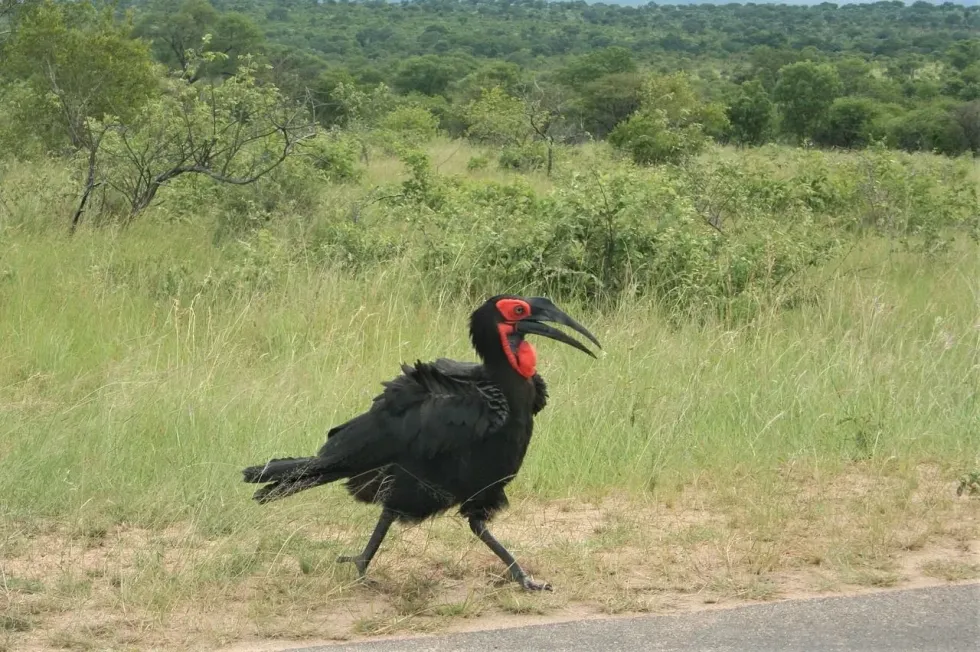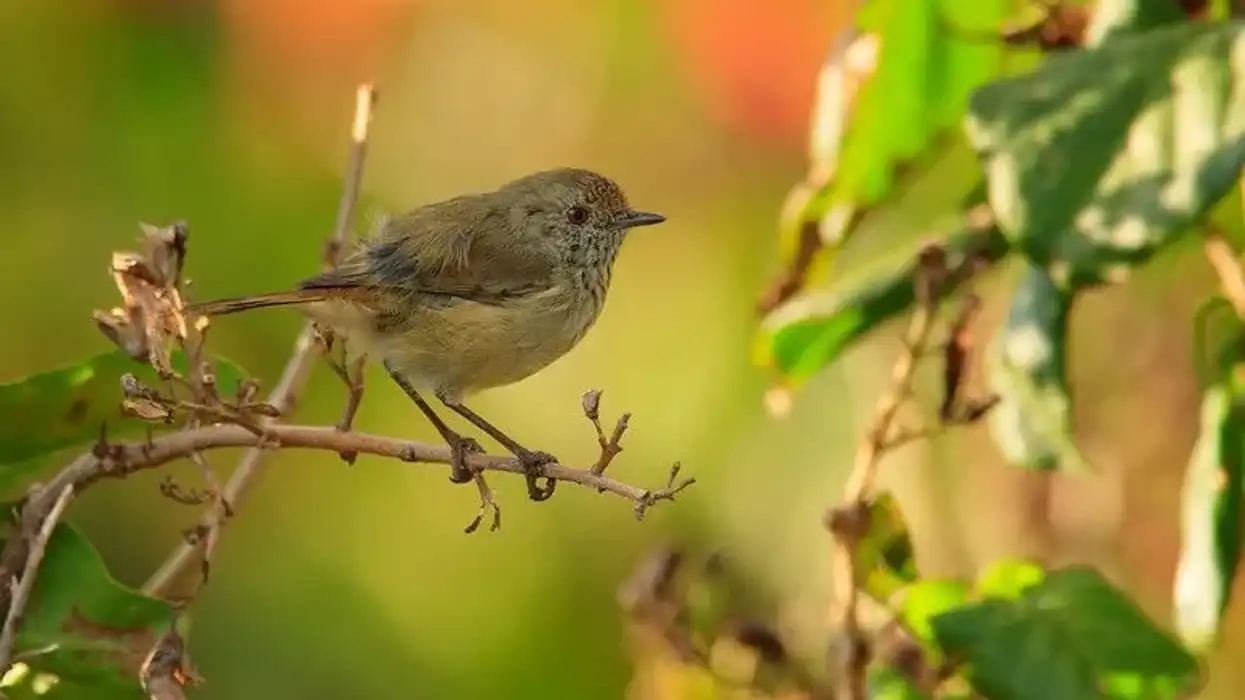Southern ground hornbill (Bucorvus leadbeateri) are wild birds found in South Africa. These birds are facing severe losses in their natural habitats. The reproductive cycle of this species from southern Africa is very slow; this species reaches sexual maturity at the age of three to four years.
All the members of a southern ground hornbill family have the behavior of defending their territory very proactively. The nests are built by both hornbill males and females of the species. The nests are built, by the pairs, in cavities of trees.
Here are some of the most fascinating facts about this bird of prey from South Africa for your perusal. Hereafter, you should also check out our other articles on hornbill and great hornbill as well.
Southern Ground Hornbill Interesting Facts
What type of animal is a southern ground hornbill?
Southern ground hornbill (Bucorvus leadbeateri) is a South African bird. These birds of prey are most commonly found in the wild regions of southern Africa.
What class of animal does a southern ground hornbill belong to?
A southern ground hornbill belongs to the Aves class of animals. These are extremely territorial birds who will protect their range of habitat aggressively against intruders.
How many southern ground hornbills are there in the world?
There are a total of less than 1,500 southern ground hornbills in the world, leading to these birds from Africa being categorized as Vulnerable. Their population is mainly concentrated in South Africa.
Where does a southern ground hornbill live?
Southern ground hornbill species' habitat can be found in savannas across southern Africa.
What is a southern ground hornbill's habitat?
Southern ground hornbill's natural habitat consists of the savannas. These birds of prey live in forests, wilds, and grasslands across South Africa. They are popular ground-dwelling birds found across southern Africa. These birds can be found up to the elevations of 9843 ft (3000 m) from sea level.
Who do southern ground hornbills live with?
Southern ground hornbills live in groups. These groups or families can comprise 2-8 individual birds. These birds of prey are very rarely found living alone in their habitat range.
How long does a southern ground hornbill live?
A southern ground hornbill bird has an average life span range of 50-70 years in the wild.
How do they reproduce?
The breeding season for southern ground hornbills starts in early summer and lasts till the summer ends. These are monogamous birds and both the male and female birds will have a single breeding partner for their entire life.
Southern ground hornbill birds reach sexual maturity at the age of 3-4 years. Males develop their characteristically red skin upon sexual maturity. They make booming sounds to attract mates.
In this species, only the biggest male and female (alpha pair) engage in breeding during a single season. Other members of the groups help the pair guard the chicks born after the reproduction process is over.
Females lay one egg at a time, in the nests, with an interval of three to seven days between the eggs. They lay one to three eggs in total. The incubation period is 37-43 days during the breeding season.
The eggs are laid by the female in the cavities built with leaves and grass in the trees in the wilds. Fledging period for the southern ground hornbill chicks is 86 days.
What is their conservation status?
These birds are not Endangered. However, the conservation status of southern ground hornbills is Vulnerable as their population has witnessed a steady decline over the years due to factors like habitat, poisoning, persecution, and electrocution.
Southern Ground Hornbill Fun Facts
What do southern ground hornbills look like?
Southern ground hornbills are very large birds. They are black in color. The primary feathers of these birds are white-colored. They have an inflatable throat sack that has red skin coloration in both males and females.
Males have a red neck whereas the females have a violet-blue color on their neck. They have long, pointed bills that are used to stab and kill the prey. Males of this species are bigger than the females.
How cute are they?
Southern ground hornbills are extremely cute. They are beautiful birds. The black color on their feathers makes them unique and attractive. They can sometimes look scary but they have a beautiful and interesting look.
How do they communicate?
Southern ground hornbills have binocular vision. They use this vision mostly to communicate. Besides that, these birds do not use calls often.
They only use their calls during the breeding season. They make loud booming sounds to attract a mate and form a pair for reproduction. The chick can be seen running around and chasing another chick along with some playful fighting.
How big is a southern ground hornbill?
A southern ground hornbill is a large-sized bird. It is in the range of 35-50.7 in (90-129 cm) in length, including its tail. They have a wingspan size ranging between 48-71 in (122-180 cm).
How fast can a southern ground hornbill fly?
A southern ground hornbill has excellent flying speed. These southern African birds can fly as fast as 18 mph (28.9 kph) over their habitat range across northern South Africa to northern Namibia.
How much does a southern ground hornbill weigh?
Southern ground hornbills are not very heavy considering their size. Males of this species are bigger and heavier than females. The weight of males ranges between 7.7-13.7 lb (3-6 kg) and that of females ranges between 4.9-10 lb (2-4.5 kg).
What are the male and female names of the species?
Males of the southern ground hornbill species are called cocks and the females of the southern ground hornbill species are called hens.
What would you call a baby southern ground hornbill?
Baby southern ground hornbills are called chicks.
What do they eat?
Southern ground hornbills are omnivorous in terms of diet. Their diet includes fruits and seeds. They feed on insects and reptiles such as tortoises, snakes, lizards. They also prey on small animals such as squirrels, rats, rabbits to supplement their diet. They are often found foraging in the grasslands.
Are they dangerous?
Southern ground hornbills usually are not seen near humans. These birds can be dangerous if you invade their territory. They live in groups that hunt together and can cause serious harm.
Would they make a good pet?
Southern ground hornbills are wild birds. They have a habit of living in groups. They are aggressive and territorial. All these characteristics do not make them good pets.
Did you know...
Atlanta National Zoo, Potter Park Zoo, Potawatomi Zoo, and Oregon National Zoo are some of the zoos where you can find southern ground hornbills.
Hornbills are hunted for their beaks, oil, and meat by natives across South Africa.
Are hornbills and toucans related?
The southern ground hornbill and toucans are similar in appearance. But they have nothing to do with each other. Their habitats, ranges, and family trees are completely different. There is absolutely no correlation between the hornbills and the toucans.
How many species of hornbill are there?
The hornbill family is a very huge family. In the world, there are currently 55 different species of hornbills including the southern ground hornbill. Most species of hornbills shut the females inside the nest but it is not known yet if any of the subspecies does not seal the female into the nest.
Here at Kidadl, we have carefully created lots of interesting family-friendly animal facts for everyone to discover! For more relatable content, check out these magnificent frigatebird facts and inca dove facts pages.
You can even occupy yourself at home by coloring in one of our Southern Ground Hornbill coloring pages.










